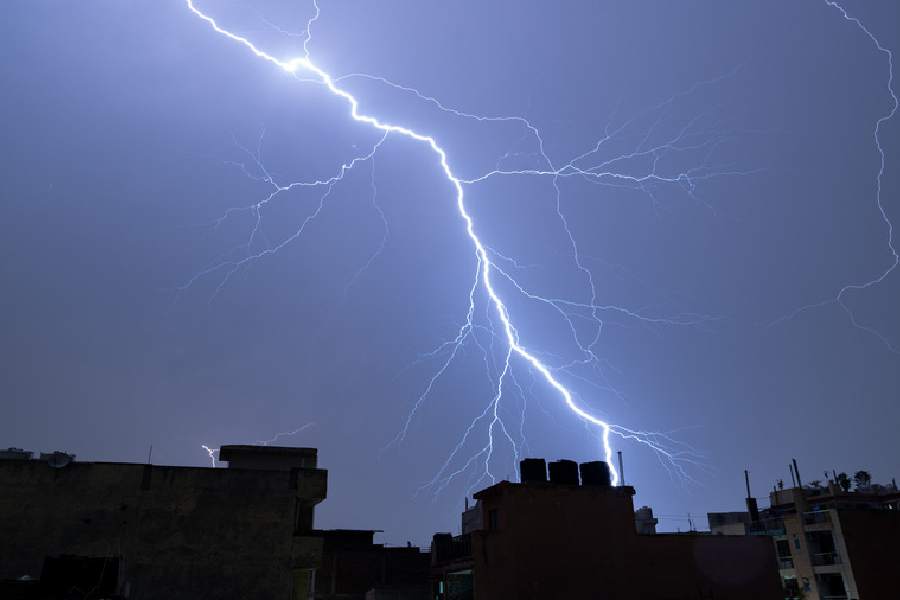By September 6, 2023, the day of departure from Leh to Kyagar in Nubra Valley, it was clear that a sense of imminent rendezvous with reality was beginning to wash over those set to attempt the 122-kilometre-long Silk Route Ultra (SRU).
In Kyagar, some rested in their hotel rooms and stayed unseen. Some walked around, conversed and chatted, ostensibly to ease the gravity of the countdown. Among the less visible was Shabbir Hussain. He must be resting. Tomorrow is his, isn’t it? — although not verbatim, that was the tenor in response from his colleagues in the military and paramilitary; at least three of them — Stanzen Phuntsog, Tsewang Kundan (from Ladakh Scouts) and Phunchok Tashi (from the Indo-Tibetan Border Police [ITBP]) — stayed in circulation, playing the occasional game of table tennis to keep themselves distracted. Shabbir appeared only on and off. Would the ones to watch out for tomorrow be the ones seen the least today? — I wondered.
Several hours earlier, at the NDS Stadium in Leh, I had picked my bus for Kyagar at random and discovered a self-effacing runner, conscious of his importance and yet wishing to be away from the glare it fetched, take his place in the seat in front. Take us also up the pass along with you, Shabbir — that, yet again not verbatim, was however the substance of the greeting he received from other runners in the bus. They all knew him as the man to watch out for. With Kundan, Stanzen and Tashi too in the same bus, our vehicle of SRU runners (and one journalist) felt special. Turbo-charged?
Shabbir Hussain’s significance to the two ultramarathons — Khardung La Challenge (KC / 72 km) and SRU — that are part of the family of races constituting the Ladakh Marathon, may be understood from the event’s archived results. Both these races come up and over the 17,618 feet-high Khardung La, among the world’s highest motorable passes.
It is an altitude with less oxygen; running becomes quite difficult. Additionally, the SRU has a start that is 50km farther away from the start line of KC. In other words, a SRU participant is more than a marathon old in terrain gaining elevation towards Khardung La by the time he reaches the village of Khardung, start point of KC. The 72-kilometre-long KC started in 2012.
As per results available on Wikipedia (the results of the 2012, 2013 and 2014 KC are not available on the Ladakh Marathon website), the 2014 KC was won by Shabbir in six hours and 35 minutes. In 2015, Shabbir finished fourth with timing of seven hours, 16 minutes and 13 seconds. By 2016, Shabbir was back on the podium, placed second (6:53:35.04). The next year was clearly Shabbir’s; he finished first (6:23:50.26) in KC. He stayed first (6:50:38) at KC, in 2018. In 2019, he made it a hat-trick of triumphs, securing the top position with a timing of 6:53:34. In 2022, he shifted to competing in SRU. He finished second (14:57:57) in the race.
Shabbir was born and raised in Darket, a village roughly 20km away from Kargil towards the Leh side. Kargil is about 2700 feet lower in elevation compared to Leh (11,500 feet); it has an altitude of around 8780 feet (source: Wikipedia). He has three brothers and two sisters. Shabbir’s father worked as a labourer. The boy studied till the 10th standard.
As is widespread practice in Ladakh, he later joined the Ladakh Scouts regiment of the Indian Army. According to Shabbir, during his days in school, there wasn’t any indulgence in sports worth mentioning. However, soon after his acceptance into the Scouts, his ability to run was recognised. That was how he started landing up at the races of the Ladakh Marathon.
The event commenced in Leh, in 2012. That year, the men’s marathon (42km) was won by Tsering Gyatso (3:36:18). In 2013, archived results show the men’s marathon sporting a new winner — Shabbir Hussain (3:25:33).
“I just ran the marathon and ended up first,” he said. The next year, Shabbir shifted from the marathon to KC (and later, SRU), achieving the string of podium finishes mentioned earlier.
Outside of Ladakh, Shabbir’s participation in races has been very limited and he has enjoyed no podium position. He travelled a couple of times with the team of Ladakhi runners Rimo Expeditions (organisers of the Ladakh Marathon) sent to the marathons of the plains.
He also participated once in the 111 kilometre-race of La Ultra The High (held in Ladakh) and secured third place. The reasons why Ladakhis do well in races at altitude but haven’t dominated as much in the races of the plains, has engaged coaches, doctors and researchers. What the runners tell you is that they struggle with the heat, humidity and primacy of speed in the races of lower elevation. Some of them, are working on it.
At Kyagar, Shabbir explained why he progressively drifted away from the marathon and stuck to KC and SRU. “My forte is stamina. I find speed tough to generate,’’ he said.
That was a day before the 2023 SRU set off late evening of September 7 and Shabbir, running in the second batch of runners (the Ladakhi elites started at 8.30pm, one-and-a-half hours after the rest of the field), showed that even in the ultramarathon, his pace — and that of the other runners from Ladakh Scouts — can be hard to match.
Used to altitude, the Ladakhis run these ultras with no hydration packs, maintain a steady pace and count on aid stations for support. Villagers, who had assembled to cheer the first lot of runners, waited to cheer the local heroes. Shabbir felt that Ladakhi athletes like Jigmet Dolma and Nawang Tsering, who have embraced the marathon, have actually taken the tougher challenge of chasing speed.
In comparison, he chose the path of less resistance — pursuing stamina. And yet that doesn’t fully sum up Shabbir for he digs a good challenge. In both the shift to KC and the subsequent shift from KC to SRU, the main motivation he conceded, was “challenge”.
It’s probably why after winning the 2023 SRU, it isn’t a return to the same race that is playing on his mind.
He wonders whether he should try the shorter KC next time, for in 2023, the KC winner, Rigzin Gyurmeth (6:31:41) of the army’s special forces, had come close to Shabbir’s timing from 2017 — 6:23:50.26. “I would like to keep the course record,’’ Shabbir, 29, said smiling. He will take a decision on KC or SRU for 2024, closer to the event.
Morning of September 8. Fifteen hours, 27 minutes and 53 seconds after he set off from Kyagar, Shabbir crossed the finish line of SRU in Leh to win the 2023 edition of the 122-kilometre-longrace. Starting at 10,700 feet in Kyagar, it had ended at 11,500 feet in Leh with 17,618 feet touched at Khardung La, in between. Among the memorable runners emerging from Ladakh Marathon yet, Shabbir would like to compete in ultramarathons outside Ladakh. Although news of races elsewhere now reaches Ladakh’s runners, Shabbir has to date not participated in an ultramarathon outside the Union territory.
“I would like to attempt 100km-races and 24-hour stadium runs,’’ he said. Top-notch competitions in these disciplines, held under the auspices of the International Association of Ultrarunners (IAU), now happen in India.
Indian teams participate. Many civilian runners also regularly take part in high-profile road and trail-based ultramarathons overseas. A serving soldier, Shabbir’s future in the sport depends much on seniors empowered to take decisions. Hopefully, they are listening.
The writer is a freelance journalist










